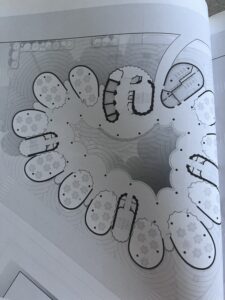Allow Me To Introduce Myself
Welcome to my blog, my name is Josie and I am currently in my 3rd year of Interior Design at ECA. The Environmental Design Course is a subject that really appeals and interests me due to the current state of the world today and the depletion of our natural resources. There is such a high demand on our natural resources and often not enough time for those resources to fully regenerate at the pace in which we as a society are consuming those resources. This over consumption is aiding the increased changes in our climate, and contributing to global warming. As a designer I think it is extremely important to educate myself on Environmental Design and learn how my choices and decisions as a designer have an impact on the natural environment. I believe the only way to design in a sustainable and ecological manor is to be well educated on the materials and construction methods we choose and the footprint they leave on the planet.

Nanyang Technological University (Heatherwick.T, 2015)
A piece of design that I consider a great piece of environmental design is Thomas Heatherwick’s Nanyang Technological University situated in Singapore and built in 2011. Singapore maintains temperatures between 25-35 degrees year round. This building was designed to create a natural air flow that increases air movement between classrooms, creating cooling without air conditioning fans. (Heatherwick.T, 2015)

Floorplans-Nanyang University (Heatherwick.T, 2015)
Air conditioning units have a large impact on global warming, often these cooling units use “hydro fluorocarbon refrigerants”. These refrigerants create strong greenhouse gases, as well as using large amounts of energy. These factors create a massive burden on our climate, continually adding to the increasing changes in our environment. Heatherwick’s design allows air to flow between the floors of the building which creates a natural draft. These drafts lead to the open plan core of the building which is also decorated with plants to aid cooling. This central hub becomes a shaded naturally ventilate space for students to gather, while also minimising the buildings effects on climate change. (UN Environmental Program, 2023)

Central Hub Of University (Heatherwick. T, 2015)
This piece of design is really well considered it takes into account the surrounding environment in which it is inhabiting and creates natural solutions to problems caused by the surrounding climate. These alternative solutions to the high temperatures are innovative, logical and sustainable. The use of natural planting within the space helps reduce C02 and promotes cleaner air within the indoor space, a feature that I think should be considered within all modern design. Creating planting within our design concepts is a natural way of reducing the warming of our planet, something that is extremely important in the future of the design industry.
Bibliography:
Heatherwick.T & Rowe.M, 2015. “Thomas Heatherwick Making” p51-p54 Thames & Hudson Ltd, United Kingdom
UN Environmental Program, 2023. “Air Conditioners Fuel The Climate Crisis, Can Nature Help?” https://www.unep.org/news-and-stories/story/air-conditioners-fuel-climate-crisis-can-nature-help#:~:text=How%20does%20cooling%20contribute%20to,double%20burden%20for%20climate%20change Accessed On 21st September 2024